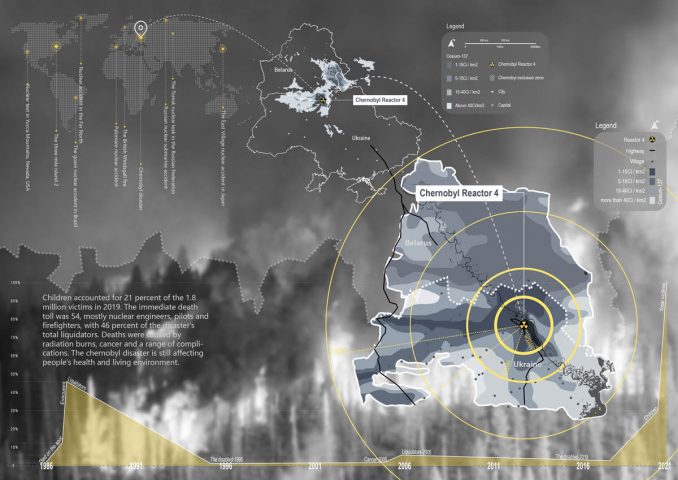
The site is located in Chernobyl, northern Ukraine, covering an area of about 2,600 square kilometers. In 1986, Chernobyl reactor 4 exploded due to man-made reasons, resulting in nuclear leakage, Chernobyl is known as a symbol of disaster, at the same time with a mysterious color, makes explorers yearn for it. Through landscape planning and ecological restoration, the project mitigates the greater radiation effects of seasonal fires while planning a stimulating tour of the nuclear exclusion zone, which is open to the world.
Project background
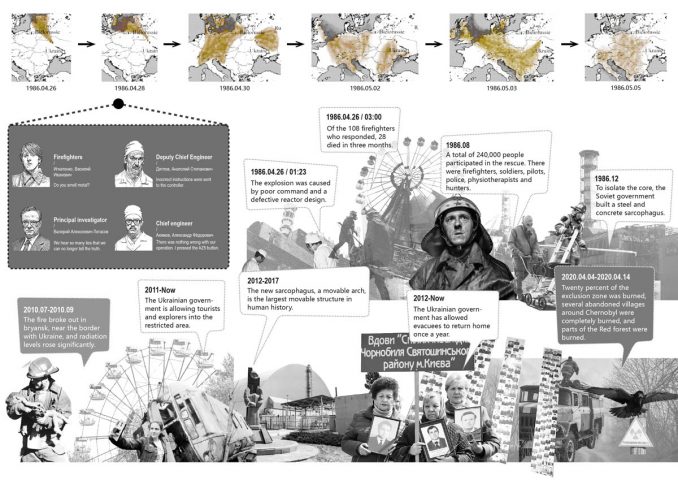
For the city of Chernobyl, the explosion of reactor No. 4 in 1986 was devastating. Through investigation, I learned the basic information of the site and made the Mapping of the current situation of the site. Two major environmental problems that need to be alleviated are found to be the impact of nuclear radiation, seasonal fire and the single impact between the two, as well as the economic problems of local people.
Design strategy and overall planning
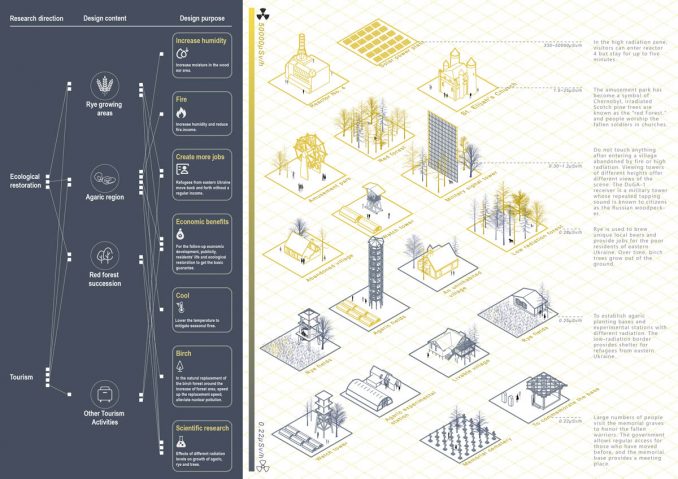
The project is divided into ecological restoration and travel planning. The three main contents of ecological restoration are rye planting area, agaric planting area and red forest replacement. Through the cultivation of agaric and rye, it can not only increase the yield of agricultural products and increase income but also provide jobs for the local people, and it can also gently humidify the local land, thus alleviating the seasonal fires in the local area. Biological experts say agaric is not affected by nuclear radiation. Rye is the main source of local wine. In the survey, it was found that distillation and other methods can ensure the safety of nuclear radiation in wine. At the same time, rye planting increases the economy, provides employment platforms for refugees in the east and surrounding areas, and rye straw can also be used as the raw material for wood posts. The red forest, located south of the blast site, was replaced by birch trees to artificially increase coverage and mitigate underground radiation.
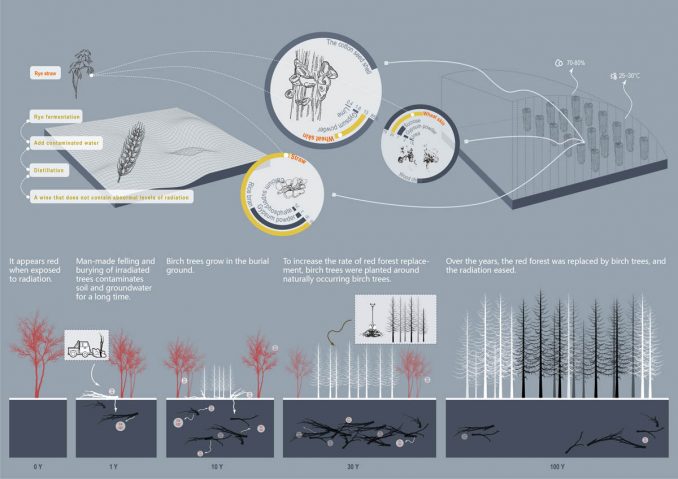
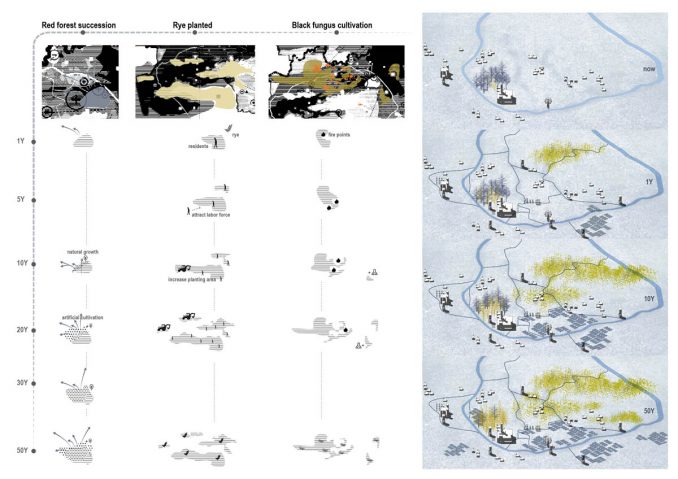
The overall plan is about 50 years, with red forest replacing more slowly and longer than rye and agaric. The master plan uses abandoned villages as exploration sites to increase activity points. Villages affected by different nuclear radiation have different landscape features. All activity points are divided into accessible, accessible and distant views, while setting up three tourist routes.
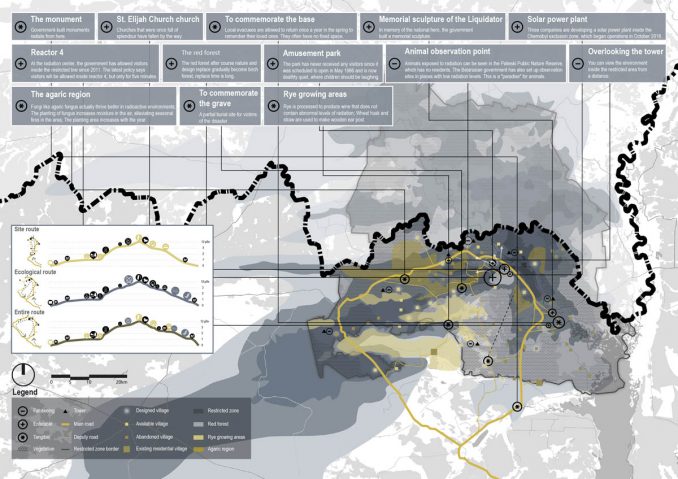
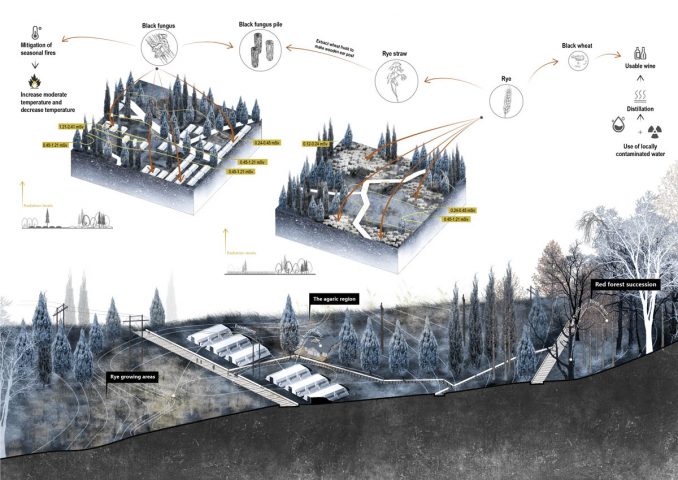
The future of cognitive
The implication of revitalizing Chernobyl is that, the restoration of the ecological landscape is not a problem that can be solved in a deeply rooted and time-sensitive way, but can be mitigated through landscape approaches, whether it’s intervention in anticipation or mitigation after the fact, which requires time and people to work together.
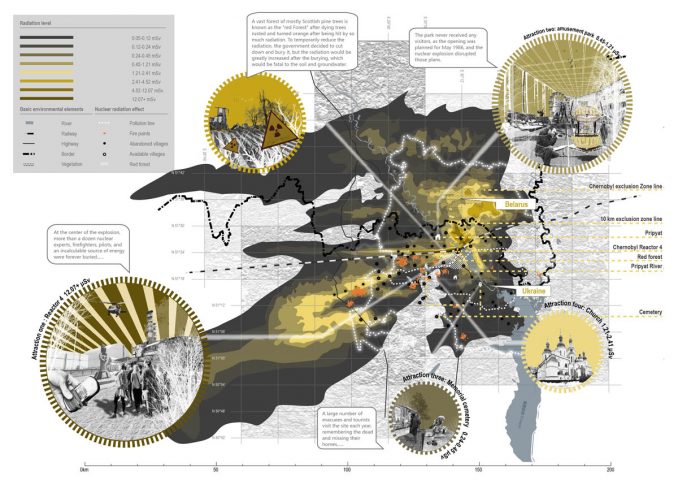
Revitalize Chernobyl Ecology and Tourism
Student Name: Xu Xin
University: Beijing Institute Of Fashion Technology
Supervisor: Li Xin
